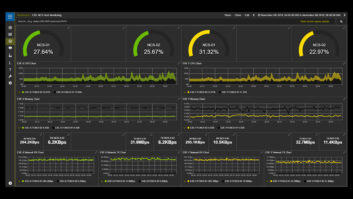In its desire to improve the entertainment technology sector’s ability to enhance and preserve artistic intent, the Media Coding Industry Forum (MC-IF) is exploring ways Versatile Video Coding (VVC) can optimise the efficiency of film grain in modern digital video environments.

Sean McCarthy, director of video strategy and standards at Dolby Laboratories and Philippe de Lagrange, senior engineer at InterDigital are both active participants in the MC-IF. They believe VVC offers a path to better modelling and more cost-efficient deployment of film grain management.
“Film grain is difficult to compress using standard algorithmic methodologies,” says Lagrange. “Video compression relies on temporal and spatial consistency to predict and compress pixels. However, film grain is a random and high-entropy signal that lacks spatial and temporal consistency, making it difficult to compress.”
Lagrange has been working on a film grain modelling technique that addresses this challenge by compressing video without the grain and then use parameters of a statistical model to synthesise replacement grain during decoding. During the recent DVB World Conference, Lagrange and his team showcased two film grain-related technologies. The first was a parameter tuning tool that allows users to adjust the strengths and sharpness of the grain in real time on a test picture, while a second demo featured real-time video decoding with grain synthesis.
“We are working on accelerating a hardware implementation of these tools to provide a cost-efficient and technically effective end-to-end way to manage film grain for content that is streamed or broadcast to devices — including content that is protected with digital rights management technology,” says Lagrange.
Film grain is used in the digital imaging world for two main reasons; firstly, it provides a perceived sharpness to the image, and it can also hide underlying artifacts such as compression or image processing flaws, especially in low-bitrate situations.
“Adding film grain to the imagery can mask these artifacts and improve the overall subjective quality of the image by about 20 to 25%,” says McCarthy. He explains that film grain analysis, distribution, and synthesis are all parts of managing film grain in digital imaging environments. Analysis involves parameterising the film grain, while the distribution includes sending metadata containing film grain information.
“The synthesis is the step where the film grain is recreated and added to the imagery during the rendering process. This end-to-end digital management of film grain has improved a lot recently thanks to the work of many experts in content creation, distribution, and consumption. It enables film grain characterizations — or models — to be included as metadata, maintaining creative intent and hiding blemishes caused by bitrate inconsistencies.”




